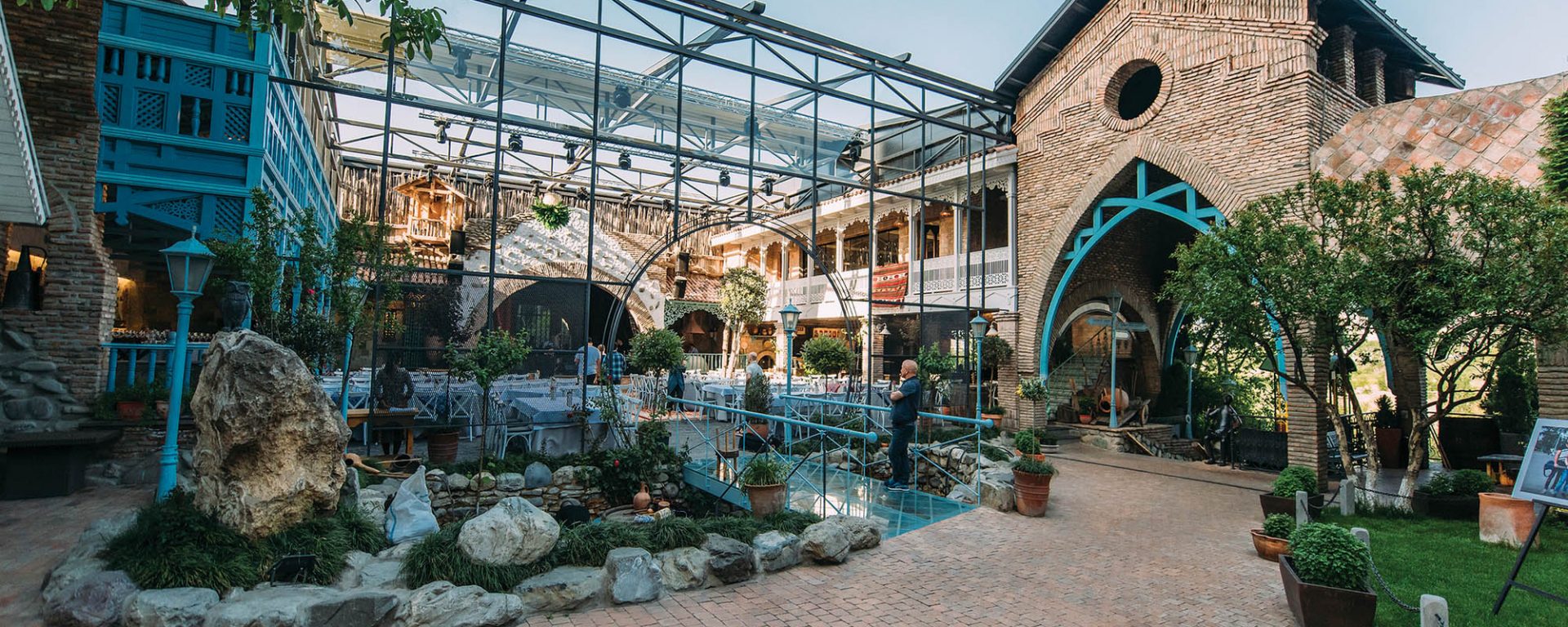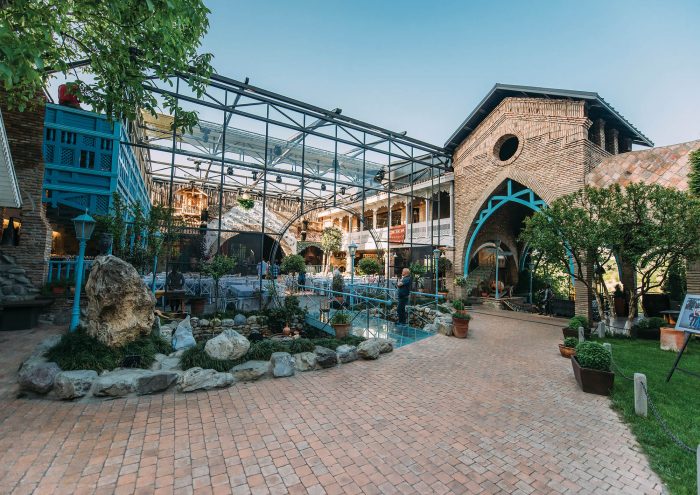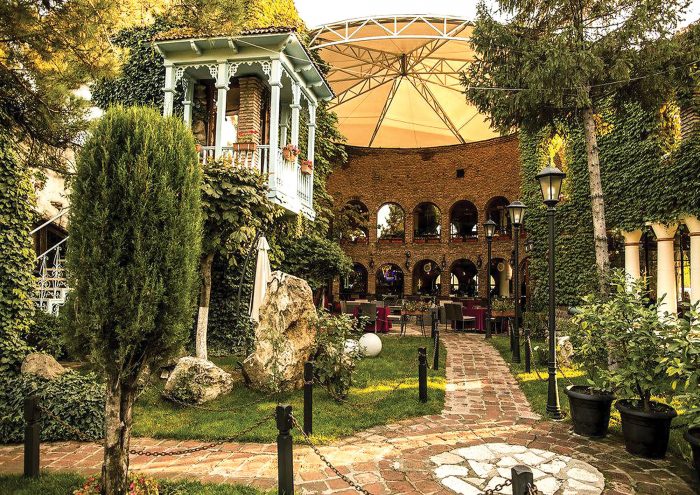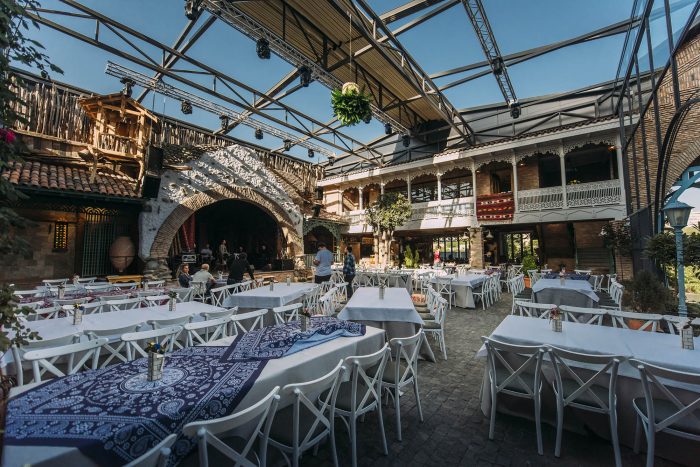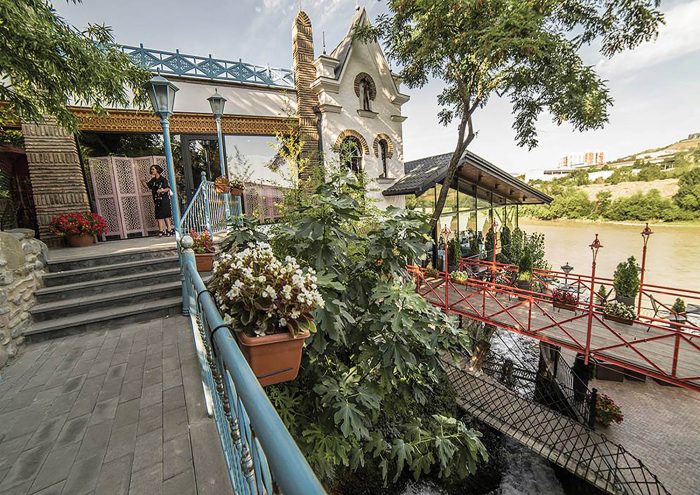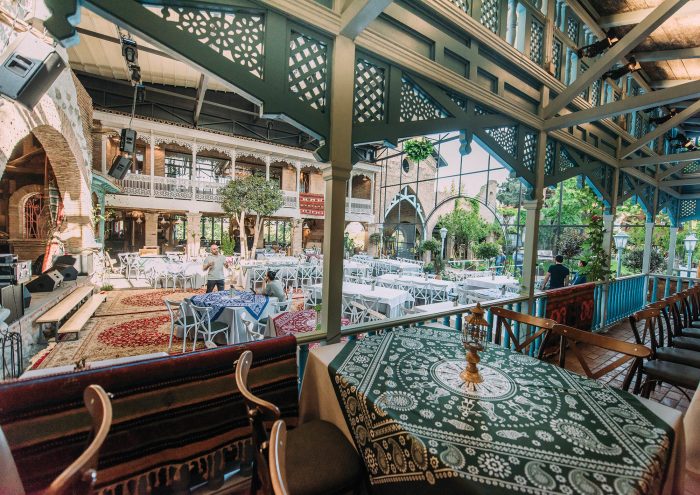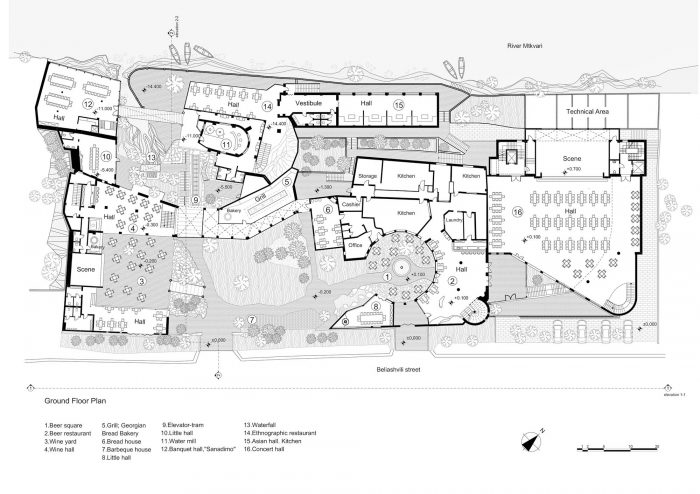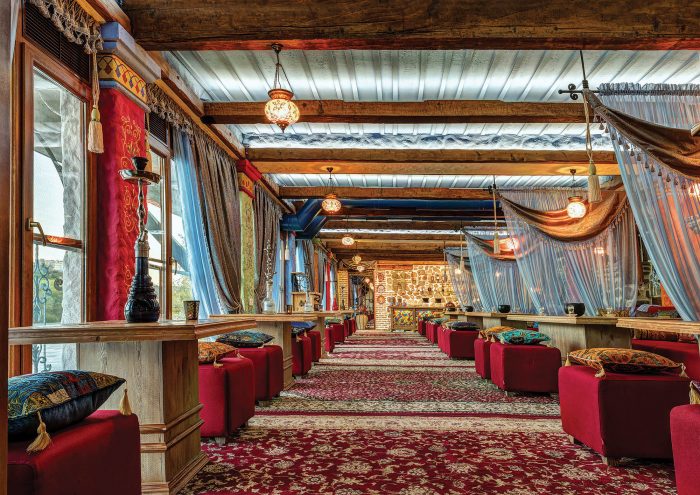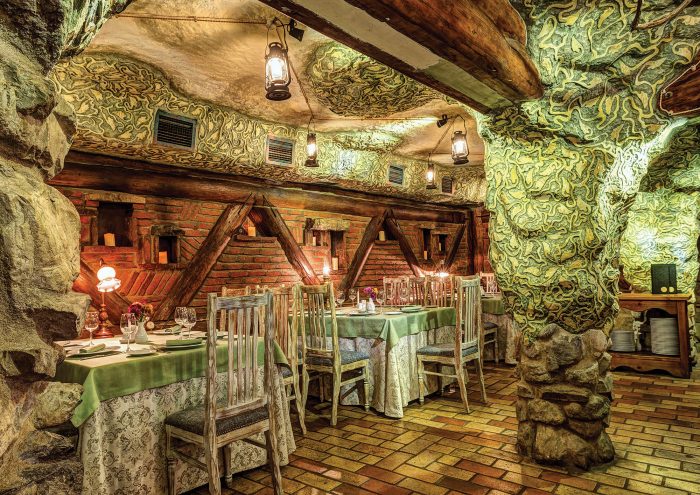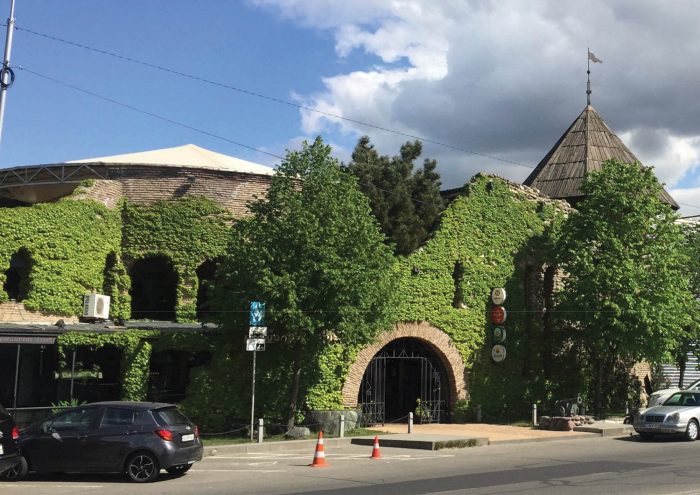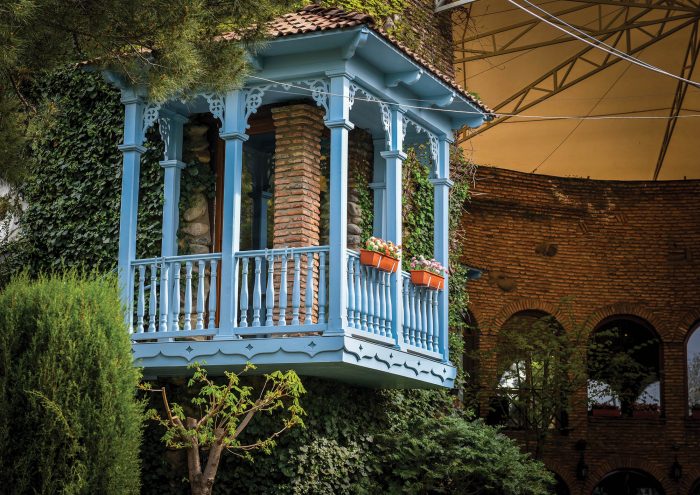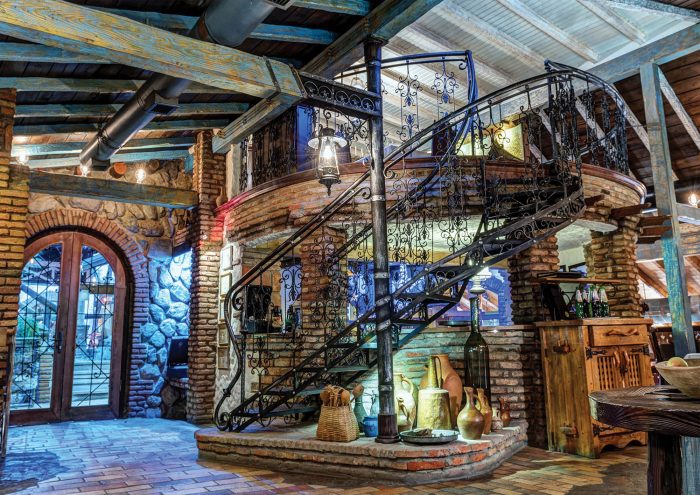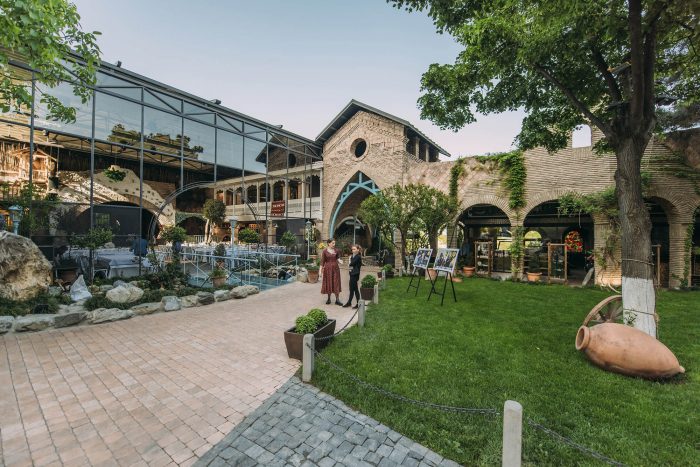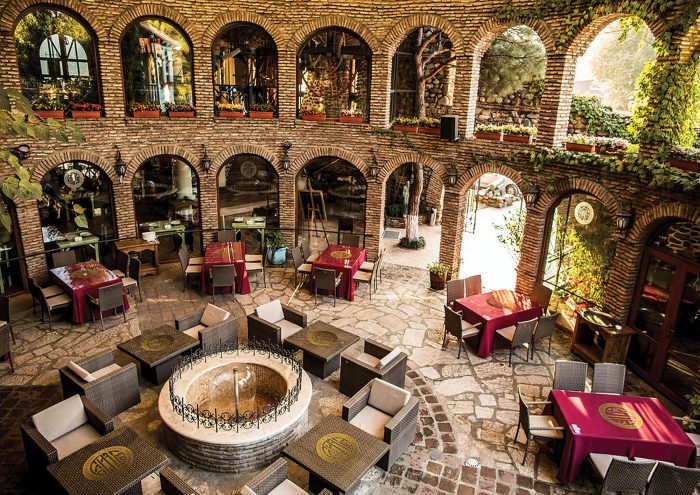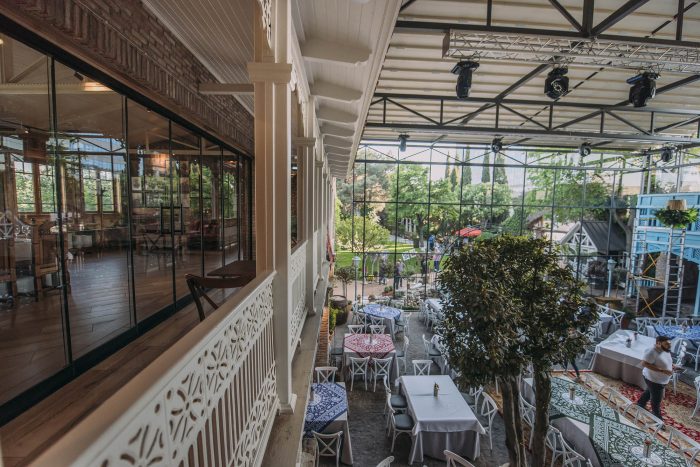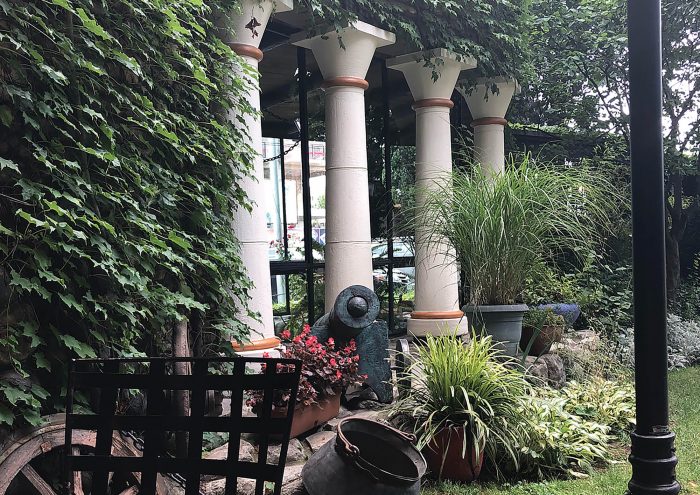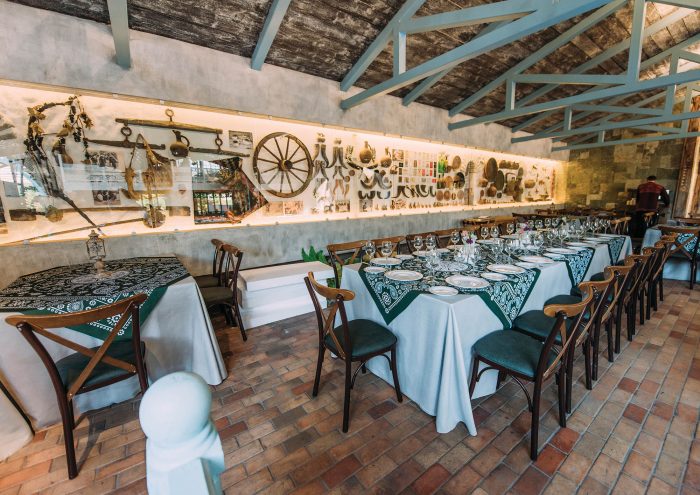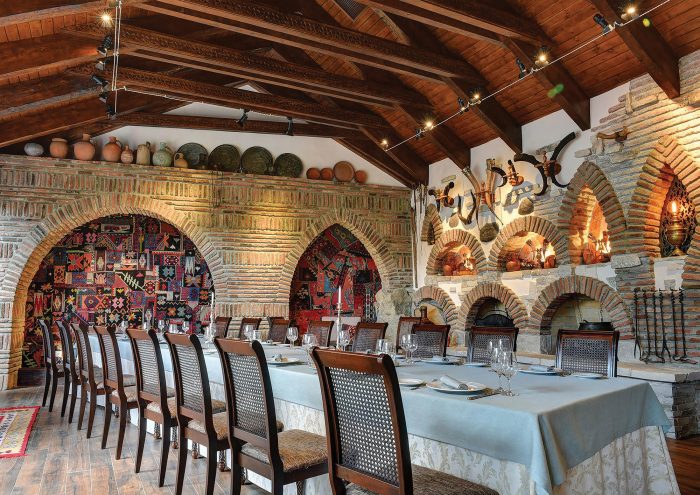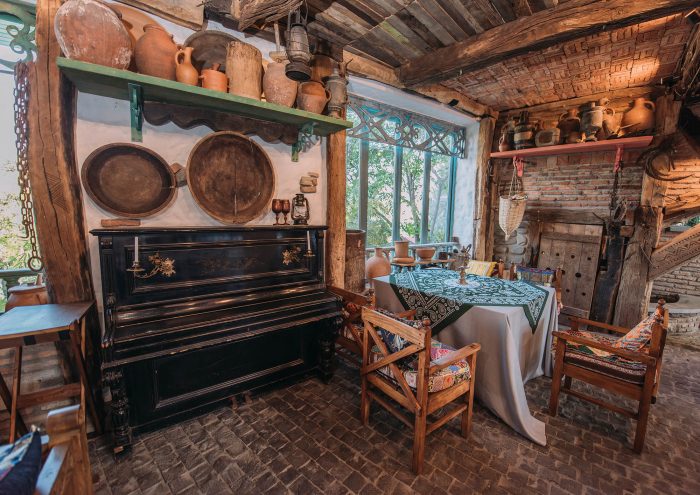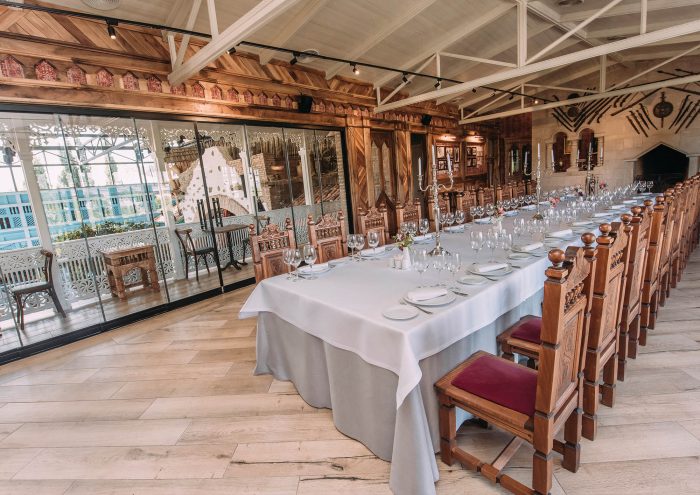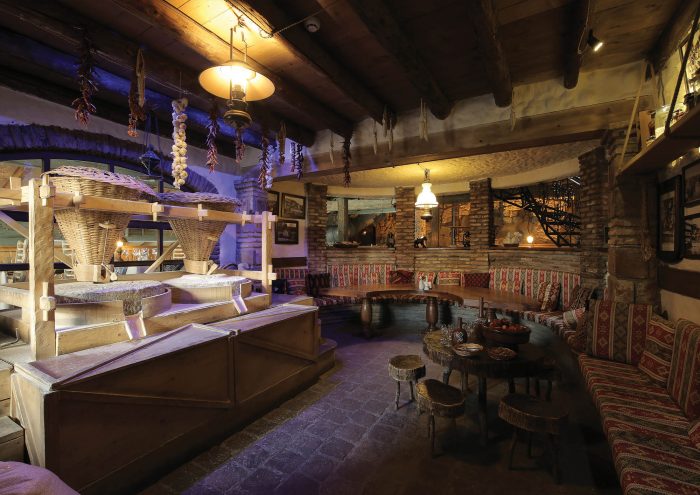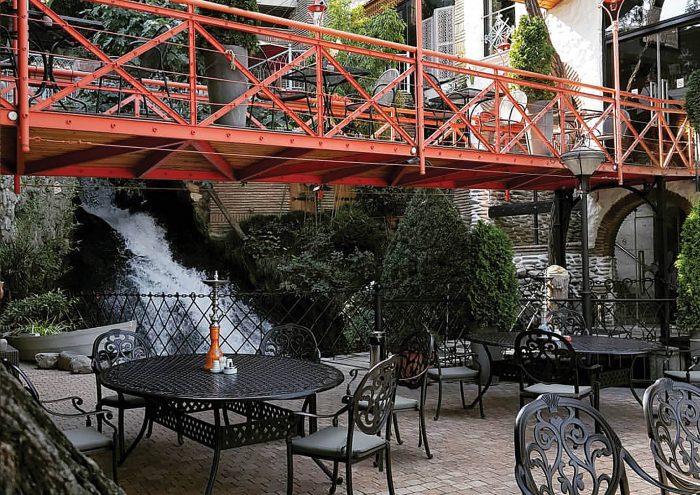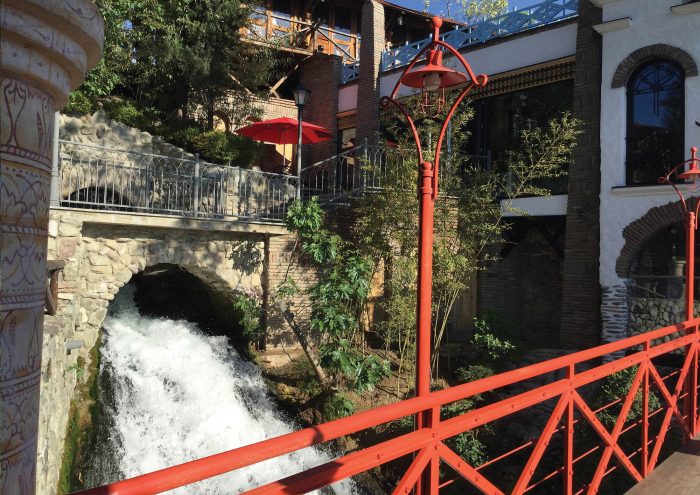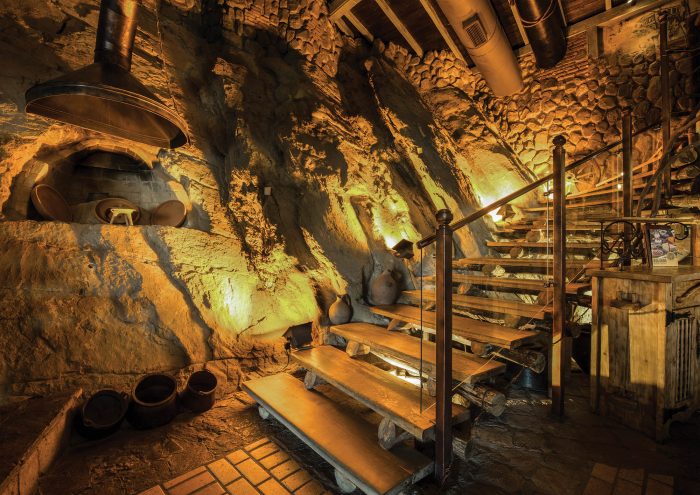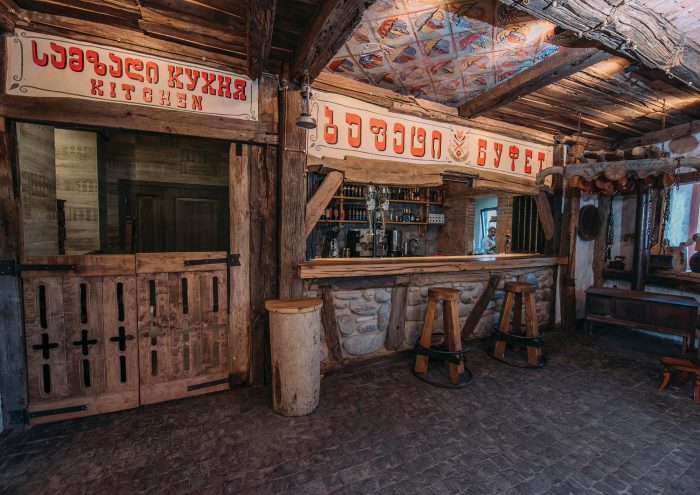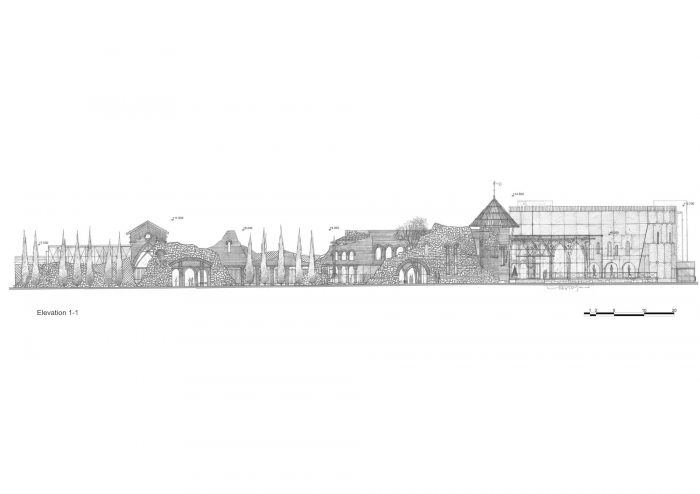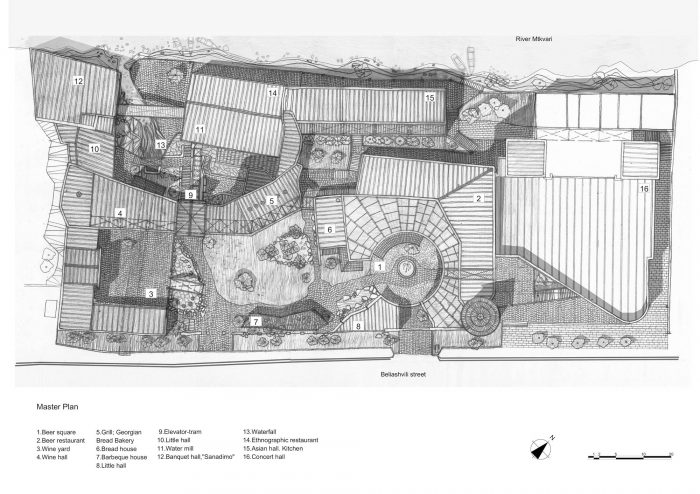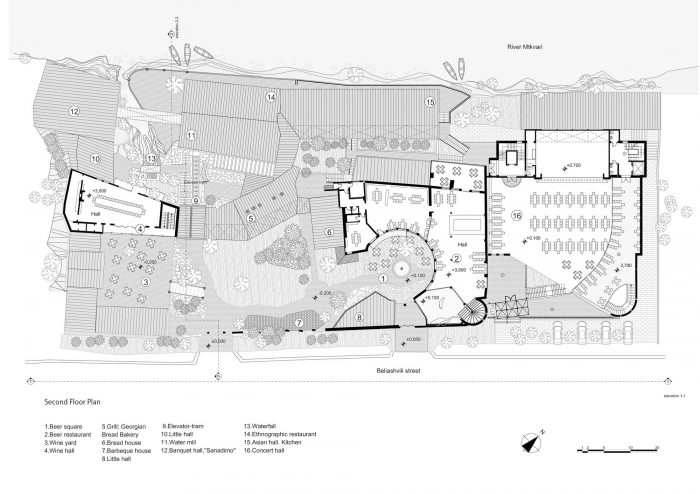吸引人的海岸景观、运营中的工厂和落入河中的相当富裕的瀑布成为项目作者创造性理解的基础。事实上,历史城市类型的 “废墟 “建筑与新旧材料的综合,是在一个新区的垃圾填埋场上创造的。休闲、娱乐和公共餐饮的多功能综合体,民族博物馆-餐厅被放置在河边相当大的区域。该设施的受欢迎程度和解决方案的独创性导致在河边建立了许多这样的功能设施。这条街道实际上是在那之后制作和形成的。
The attractive landscape of the coast, the operating mill and the rather affluent waterfall falling into the river became the basis of creative understanding of the author of the project. Factually, the architecture of the historic city type “ruins” with a synthesis of old and new materials was created on the landfill in a new district. Relaxing, entertaining and public catering multifunctional complex, ethno museum-restaurant was placed on a fairly large section along the river. The popularity of the facility and the originality of the solution led to create lots of facilities of such function along the river. This street was made and formed after that actually.
从最复杂的浮雕开始,到建设性的规划方案,施工是最困难的问题。施工时间 – 18年,一直值得注意。相当复杂的建筑解决方案的复杂性是嵌入在项目概念:景观,外部,内部和内部院子作为一个整体的空间,其统一的看法的介绍。通过建筑师的这种方法,室内从室外被感知,反之亦然。博物馆餐厅中传统和现代材料的交替,复杂的浮雕,现有的海岸和周期性的水位上升,需要提供额外的护岸工程,这与施工同步进行,这需要困难的工程解决方案。
Started with the most complex relief, continued by constructive-planning solution, construction represented the most difficult problem. Duration of construction – 18 years, has been noteworthy. The complexity of quite complicated architectural solution is embedded in the project concept: the presentation of the landscape, exterior, interior and inner yard as one whole space, its unified perception. With this approach of the architect, the interior is perceived from the exterior and vice versa. Alternation of traditional and modern materials in the museum-restaurant, complex relief, existing coast and periodic increase of water level required providing additional bank-protection works, which was carried out in parallel with construction and it required difficult engineering solutions.
在博物馆餐厅的建设中,使用了在格鲁吉亚不同地方发现的传统建筑碎片和材料,如砖、瓦、石头、木材。所有材料都是从老建筑上实际使用的材料中找到的,它们保留了原有的外观、古朴的效果和色彩。梁、天花板、屋顶等结构元素也是由上述材料构成的。从河岸开采的石料被用于建筑中。旧的材料与新的、现代的材料相结合:金属、玻璃、铺路材料、工程基础设施。新的材料使现代建筑部分也是如此:金属桁架,可转换的屋顶,大型玻璃窗。
Traditional architectural fragments and materials such as brick, tile, stone, wood found in different places in Georgia were used in the construction of the museum-restaurant. All materials were found from materials actually used on older buildings and they have retained their original appearance, antiquity effect and coloration. Constructive elements such as beams, ceiling, roofing were structured by the mentioned materials as well. The stone material extracted from the river bank was used in construction. The old materials used are combined with new, modern ones: metal, glass, paving materials, engineering infrastructure. New materials make the modern constructional part as well: metal trusses, transformable roof, large-scale glass windows.
项目建筑方案的灵感来源是位于项目区域的瀑布和浮雕,在这里创造了一个小城镇的概念,并将绿化内院设计成一个大空间,将各种小居住区类型的设施围合起来。啤酒广场、啤酒馆、酒场、酒馆、民族馆、水上磨坊、艺术家工作室-餐厅、烧烤屋、面包屋。
The inspiration idea of the architectural solution of the project was the waterfall and relief located in the project area, where the concept of a small town was created; also green inner yard designed as one large space, enclosing and uniting various facilities of small settlement type: Beer Square, Beer Hall, Wine Yard, Wine Hall, Ethno Hall, Mill on Water, Artist’s Workshop-Restaurant, Barbecue House, Bread House,
地窖、建筑遗迹。所有这些都是在建设过程中逐步发展和完善的。最终的目标是将 “Tsiskvili “打造成一个博物馆餐厅,它不仅是一个现代化的餐饮设施,也是一个最有趣的城市观光地,是一个旅游中心。
Cellar, Architectural Remains. All this was gradually developed and sculpted during the construction process. The final aim was to make “Tsiskvili” as the museum-restaurant which will become not only a modern food facility, but one of the most interesting places to see the city as well, a kind of tourist center.
建筑师:Studio 9
面积: 6607 m²
年份:2020年
摄影:Oto Gordeladze
首席建筑师:Mamuka Chkhaidze
城市:第比利斯
国家:格鲁吉亚
Architects: Studio 9
Area: 6607 m²
Year: 2020
Photographs: Oto Gordeladze
Lead Architects:Mamuka Chkhaidze
City:T’bilisi
Country:Georgia

